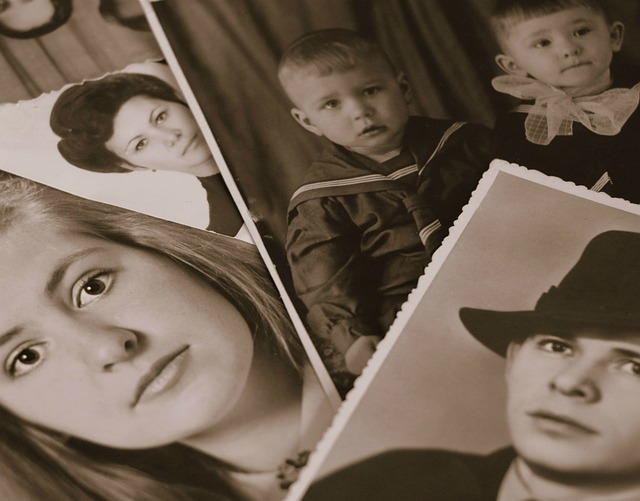
Photographs are a precious part of your family history, preserving memories that stand the test of time. However, sometimes the unexpected happens and water damage threatens these priceless snapshots, and the thought of losing these emotional treasures can be heartbreaking. In this comprehensive guide, we dive into the process of restoring family photos after water damage, covering everything from short-term fixes to long-term restoration strategies. Our mission is to arm you with the information and resources you need to protect these priceless pictures that embody your family’s story.
Let us guide you through the delicate process of salvaging family photos, providing you with a roadmap to ensure that your family’s visual legacy stays intact and vibrant. As we dive into the specifics of photo recovery, it is important to understand that the resilience of photographs varies, and swift, careful action is key. Each photograph holds a unique story, and our mission is to empower you to protect these stories from the ravages of water damage.
See also our post on Fire Damage Restoration Services in West Lake Hill, TX
Immediate Response to Water-Damaged Photos
Swift Retrieval
Retrieve water-damaged photos as quickly as possible. The longer they remain submerged, the higher the risk of irreparable damage.
Handle with Care
Handle wet photos delicately. Wet photo paper is fragile and can easily tear, so use a light touch.
Separation of Stuck Photos
If photos are stuck together, avoid pulling them apart forcefully. Soak them in clean water to gently separate them without causing damage.
Blotting Excess Water
Gently blot excess water from photos using a clean, soft cloth or paper towel. Avoid rubbing, as it can scratch the photo surface.
Air Drying in a Safe Environment
Lay photos flat on a clean, dry surface for air drying. Ensure they are in a safe environment away from direct sunlight and humidity.
Drying Techniques for Water-Damaged Photos
Air Drying
Lay photos flat on an absorbent surface for air drying. Flip them periodically to ensure even drying, and use fans to enhance airflow.
Freezing for Preservation
If drying isn’t immediately possible, freeze wet photos. This halts further damage and provides time for proper drying at a later date.
Dehumidification
Use dehumidifiers to control the humidity in the drying area. Maintaining lower humidity levels aids in the preservation of photos.
Interleaving with Absorbent Paper
Place absorbent paper between photos to aid drying and prevent sticking. Change interleaving sheets regularly until photos are fully dry.
Professional Photo Restoration
For severely damaged or irreplaceable photos, consult professional photo restoration services. They have the expertise to handle complex restoration processes.
Dealing with Stains and Color Fading
Gentle Blotting for Stains
Gently blot stains on photos using a clean cloth or paper towel. Avoid aggressive rubbing to prevent further damage.
Distilled Water for Cleaning
Use distilled water sparingly for cleaning. Dampen a soft cloth with distilled water and gently wipe the photo surface to remove contaminants.
Colorfastness Test
Before using any cleaning method, perform a colorfastness test in a small, inconspicuous area to ensure the treatment won’t cause color bleeding.
Stabilizing Fading with Archival Spray
If colors have faded, consider using archival spray to stabilize the image. Apply the spray in a well-ventilated area and follow product instructions.
Professional Restoration for Severe Damage
Seek professional assistance for severe damage. Professional photo restorers have the tools and expertise to address complex issues.
See also our post on Detailed Water Damage Restoration Checklist
Preservation Techniques for Future Protection
Digitization for Backup
Digitize family photos for a digital backup. This provides an additional layer of protection against physical damage and loss.
Acid-Free Storage Materials
Store photos in acid-free materials, such as archival albums and sleeves. Acid can deteriorate photo paper over time.
Controlled Storage Conditions
Store photos in a controlled environment with stable temperature and humidity. Avoid attics, basements, or areas prone to temperature fluctuations.
Handling with Clean Hands
Handle photos with clean hands to avoid introducing oils, dirt, or contaminants. Use cotton gloves for particularly delicate or valuable photos.
Regular Inspection
Periodically inspect stored photos for signs of damage. Early detection allows for prompt intervention and ensures the continued preservation of your family’s visual legacy.
Emotional Considerations in Photo Restoration
Prioritizing Sentimental Value
Prioritize the restoration of photos with significant sentimental value. These are the images that hold irreplaceable memories.
Involving Family Members
Involve family members in the restoration process. Their insights can help identify the importance of certain photos and guide restoration priorities.
Patience in Restoration
Understand that the restoration process takes time. Be patient and allow professionals the necessary duration to delicately restore your cherished photos.
Honoring Imperfections
Embrace the imperfections that may remain after restoration. These imperfections tell a story and add character to the visual narrative.
Sharing Restored Photos
Share restored photos with family members. This not only preserves memories but also strengthens the familial bond through shared history.
See also our post on Water Damage Restoration Guide: How to Restore Property After a Disaster
Conclusion
This guide serves as a companion, providing you with insights and techniques to ensure that your family’s visual legacy remains a vibrant testament to love, joy, and resilience. May your restored photos continue to illuminate the chapters of your family’s history, preserving the moments that make your story uniquely yours. All photographs are pieces of a mosaic that tells the story of your family’s journey, and as you navigate the delicate process of recovery, remember that the essence of these images lies not only in their visual representation but in the memories and emotions they encapsulate.






